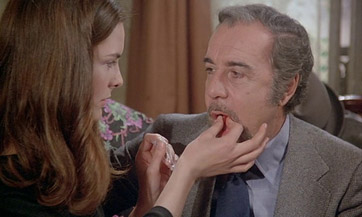|
|
Sole Criterion: That Obscure Object of DesireBy Brett Ballard-BeachJune 7, 2012
If you have even a slight familiarity with the storyline, you will know that the “hook” of the film is that Conchita is played by more than once actress. Two to be precise: Carole Bouquet and Angela Molina, who were both in their early 20s during production (playing the teenaged Conchita). What is most surprising is that this conceit was not Bunuel’s idea, or even his original game plan. The actress who had been hired (Maria Schneider from Last Tango in Paris) left early on due to creative differences and it was Bunuel’s producer who floated the idea to the director. There appears to be little rhyme or reason to the switching between the two (although the alternating gives the unverified impression that each actress is onscreen for roughly the same amount of time). The use of two women to play one role is never acknowledged (even winkingly) by the film or its characters. It is simply a fact. Bunuel’s decision works perfectly because it not only mirrors Mathieu’s frustration at the failure of his every effort to consummate his love with Conchita (just as he seems to be making progress with one version, it is the other one who returns from the lavatory) but it seems providentially, serendipitously Bunuel at its very core. Further, it illuminates Mathieu’s character in that he is rendered all the more pathetic by his inability to see what is right in front of his eyes. At the same time, it deepens Conchita’s character by suggesting that there is more to her than Mathieu can acknowledge and that his inability to allow for her complexities is ultimately what keeps him from “obtaining” her.
|

|
|
|

|
Sunday, May 5, 2024
© 2024 Box Office Prophets, a division of One Of Us, Inc.


